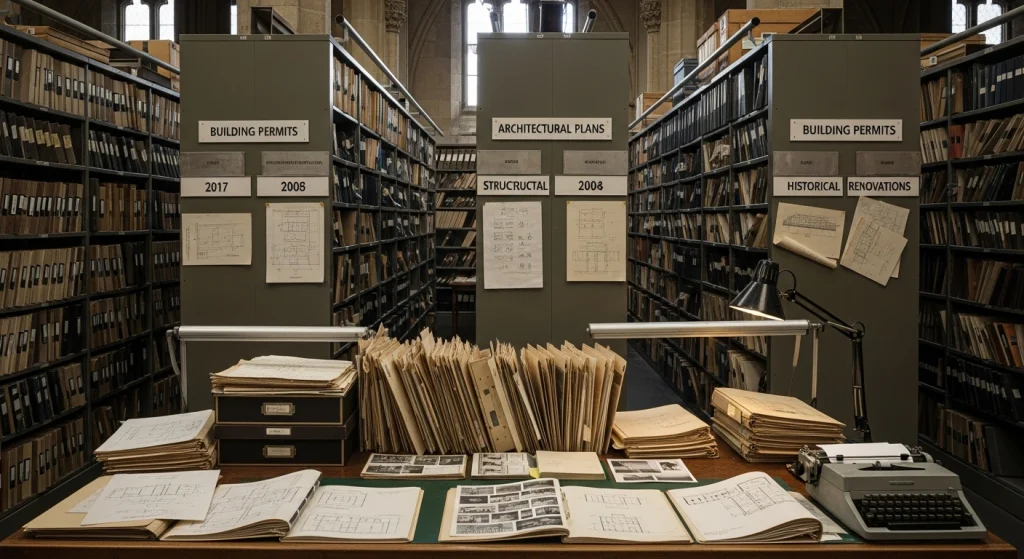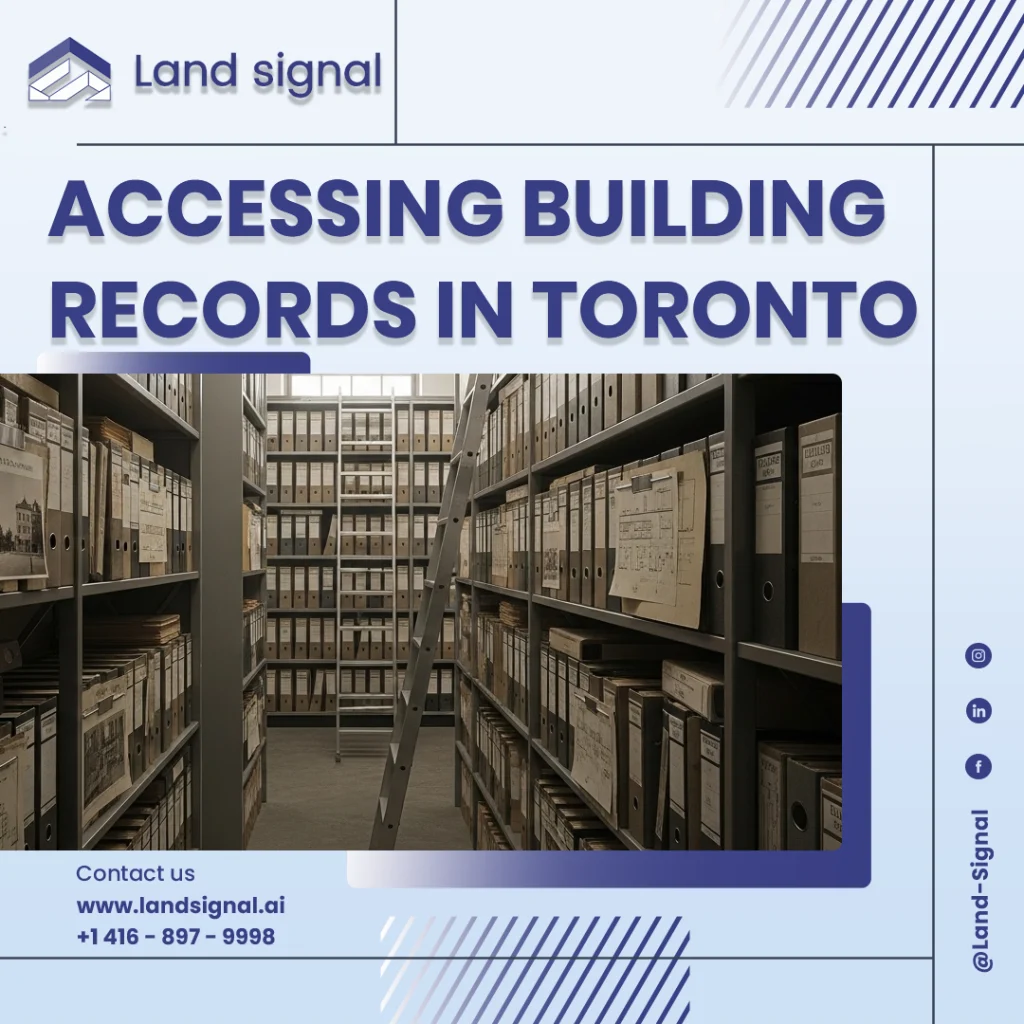Before investing in Toronto real estate, consider the hidden risks. Every property has a documented history in its building records, including permits, plans and inspection reports that reveal its true condition. Failing to consider these details could result in severe financial setbacks due to unauthorised work or structural issues.
This guide simplifies the process of accessing building records in Toronto, equipping you to uncover crucial facts. At LandSignal, we specialise in interpreting this technical data, helping you to understand complex information and protect your investment.
Start Your Project with Confidence
At Land Signal, we assist with construction and renovation permits, as well as Garden House and Laneway Suite designs. Let our experts guide you through every step.
When You Might Need Building Records?
Accessing a property’s official files is important for many people dealing with the city’s real estate. These documents show a clear history of the property, including what it is allowed to be built and any problems that have happened in the past. It’s important to know when to check these records to avoid unexpected problems.
You will find these documents very useful in several important situations, including:
- Real Estate Due Diligence: Before finalizing a purchase, reviewing permits ensures all previous work was approved and inspected. A permit that was never closed can halt a sale or become the new owner’s liability.
- Planning a Renovation: Existing blueprints are invaluable for your design team. They show structural details and past alterations, saving time and preventing costly errors during the planning phase.
- Confirming Legal Status: For properties with additions like a basement apartment or a laneway suite, records confirm their legal and compliant construction, which is essential for insurance and resale value.
- Resolving Property Disputes: Building records can provide definitive proof in disagreements with neighbours over property lines or illegal constructions.
The Simple Request Process step by step
Although dealing with local government can feel overwhelming, the process of accessing building records in Toronto is actually quite simple. The city makes it easy for homeowners and professionals to find the information they need. If you follow these steps in the right order, you can make sure that your request is handled quickly and efficiently.
Step 1: Identify and Prepare Your Request
First, clarify exactly what you need. Are you looking for building permits, architectural drawings, or survey plans? Next, gather the property’s full municipal address. You will need to complete the “Application for Record Disclosure” form, which is available on the City of Toronto’s website. This form is your official request.
Step 2: Submit the Form Electronically
Once completed, you must email the form to the Toronto Building records department. The dedicated email address for these requests is [email protected]. Ensure all information on the form is accurate to avoid delays in processing. If you are not the property owner, you may need to include a signed consent from the owner, especially for recent architectural plans.
Step 3: Await Confirmation and Follow Up
After submission, the city will process your request. You will typically receive an acknowledgement and an invoice for the associated fees. From there, you can use the city’s online portal to check the status of your building permit application or inspection records with your file number.

Fees, Timelines, and What to Expect
Understanding the practical details of your request helps manage your project timeline and budget effectively. While the city aims for transparency, knowing the specific costs and waiting periods is crucial for proper planning.
- Associated Fees: As of 2025, the standard fee for a routine search and retrieval of building records is $74.02. For more complex requests, such as a full Property Information Report, costs can vary.
- Expected Timelines: The standard processing time for a building records request is approximately 30 business days. This timeframe can fluctuate based on the volume of requests and the complexity of your file.
- What You Receive: For permit applications filed after December 31, 2006, you will likely receive digital copies of the plans. For older properties, especially those with records dating back to the 1880s, information may only be available on microfilm at the City of Toronto Archives.
Why Professional Interpretation of the Documents Matters?
Successfully accessing building records in Toronto is one thing, but understanding them is another. These documents are technical and filled with industry jargon, symbols, and references to complex zoning bylaws. A simple misinterpretation can lead to flawed renovation plans, unexpected compliance issues, or an out-of-control project budget. Missing an open permit could cost you thousands to fix. This is why expertise is essential. At LandSignal, our team specializes in interpreting these documents. We don’t just see lines on a page, we see the history and potential of your property. We translate complex architectural and legal information into clear, actionable advice. We help you understand exactly what the records mean for your project, ensuring you move forward with confidence and a solid plan.
Read Also: Home Building Cost CalculatorConclusion
Don’t worry about understanding Toronto’s building regulations. The city’s records are a resource meant to empower you with facts. If you follow the steps outlined here, you can learn about your property’s history and structure. This knowledge makes it easier to access building records in Toronto. It’s an essential skill for any informed owner, buyer, or renovator in the city.
FAQ
How to access recent building records?
If you need to access recent building records in Toronto, you can submit a Toronto Building Records Disclosure application by email to [email protected]. For more information, you can check the status of active permits online at the City of Toronto’s website.
How to access historical building rec006Frds?
If you want to see historical building records in Toronto, you can either request digital records through the City of Toronto website or visit the City of Toronto Archives for older documents. Where you start depends on how old the building is and what records you need.
What you can find in building records?
In Toronto, building records provide information about a property’s history, how it was constructed, and if it complies with the relevant regulations. Records can include things like blueprints, permit information, past violations, and structural details. You can access them through Toronto Building or the City of Toronto Archives, depending on how old the records are.




